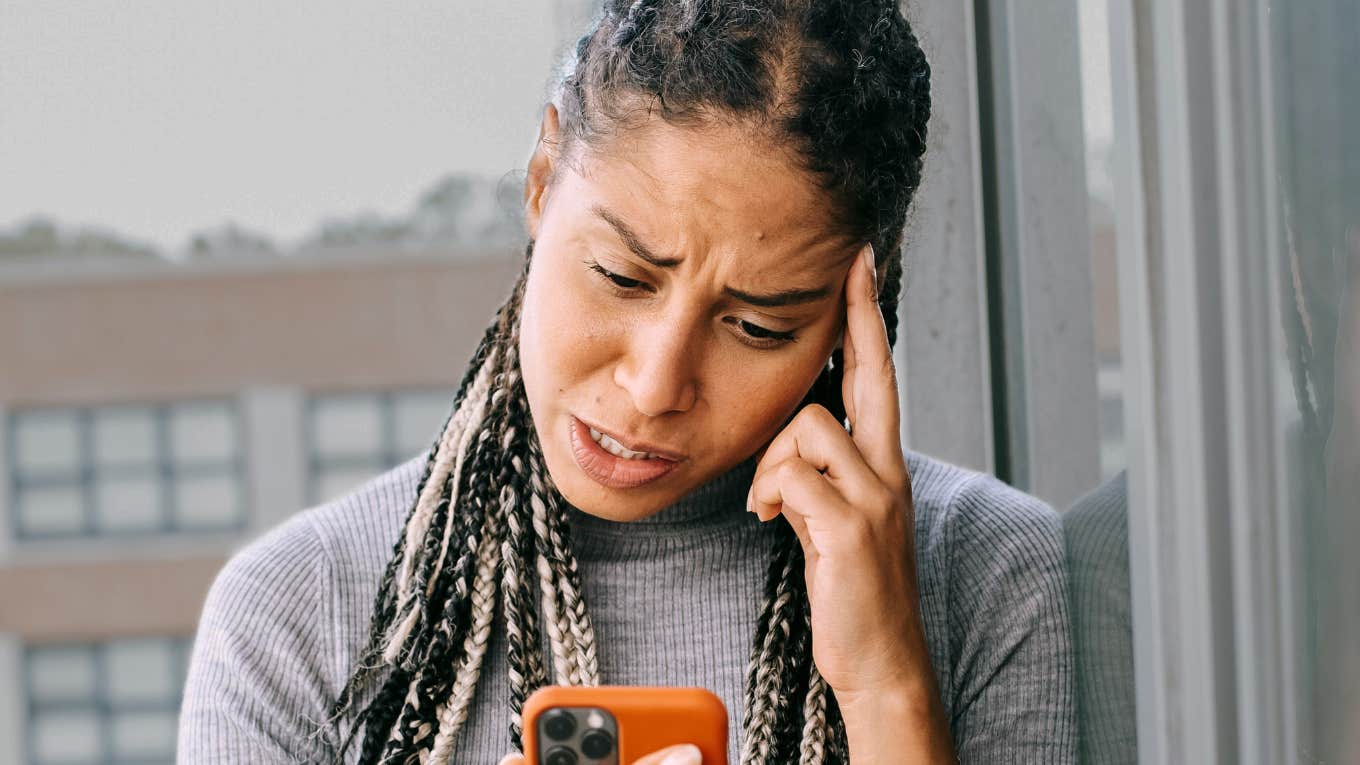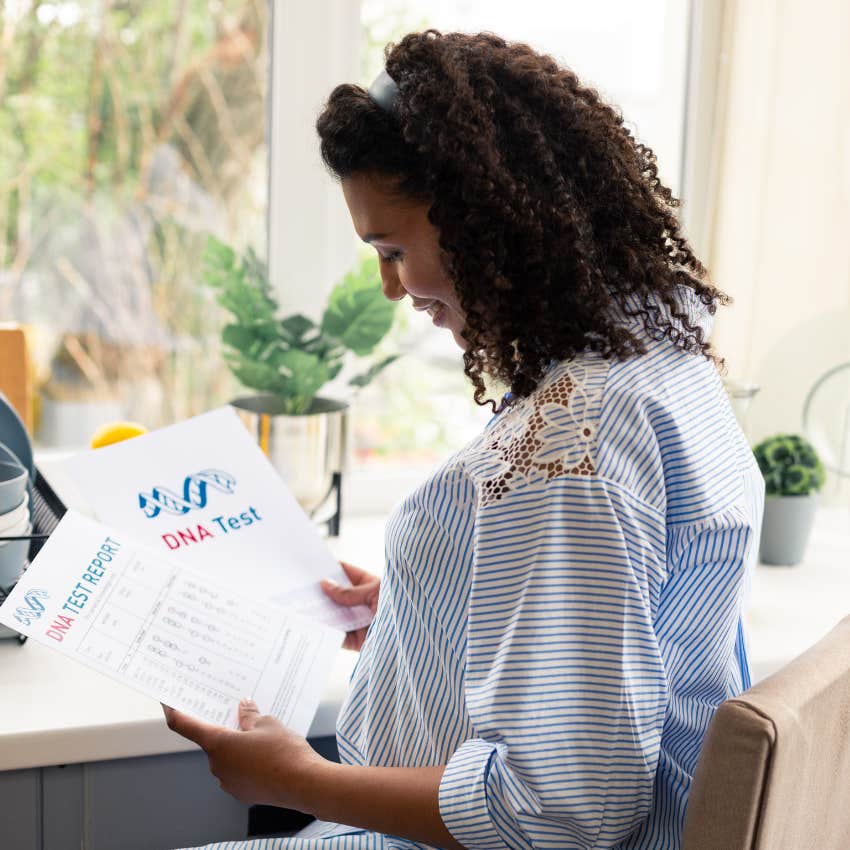I Took A DNA Test To Trace My Ancestry And Discovered 3 Huge Shocks
I expected fun facts about my roots, but what I found instead changed how I see my entire identity.
 Alex Green | Canva
Alex Green | Canva I took a DNA test during the very first COVID-19 lockdown. Perhaps it was boredom that made me take that chance and order the spit tube for the bargain price of £80 — I had nothing else to spend my money on during those months. Plus, I had time on my hands, so I decided to pick up the genealogical research I had been undertaking since 1996 and discover my family history.
A friend convinced me DNA testing was a good idea; she had a varied ancestry profile with Spanish, Native American, and Irish DNA in her profile, and other smaller percentages from different European countries, too. It seemed exciting to find out my roots. I have dark hair and dark eyes, and I imagined there had to be something exotic out there in my family tree that I simply hadn’t found yet.
I never felt Scottish. I felt displaced, and I had very little in common with my parents, sister, aunts, uncles, and cousins. Somewhere, deep down, my imagination took over, and I suspected I was switched at birth. So, I ordered the test, harvested my spit, and sent it off to find out who I really was.
I took a DNA test to trace my ancestry and discovered a few huge shocks:
1. I had a half-brother with 18% shared DNA
I couldn’t believe it. I dropped my phone, my hands shaking and my blood pressure rising until I heard my pulse thrumming in my ears. I couldn’t possibly have a half-brother. My parents met when they were young and have both maintained, all my life, that the only children each of them has are me and my sister. They’re both quite proud of their boring, uneventful love lives.
It took me about an hour to work up the courage to look at my predicted half-brother’s profile. As soon as I saw the name, I relaxed. He was my cousin. He was born in 1994, and we have nothing in common, but he and I share a high amount of DNA.
When I checked online, I found research that said a first cousin could show a DNA match of between 4% and 23%. So, why give me a heart attack by telling me that I had a possible half-sibling? It’s good to remember that these tests show a lot of data, but the interpretation of that data can’t be reliably done by Artificial Intelligence, or it may end up telling you that your cousin is your brother.
While I was comforting myself with the knowledge that my cousin was not, indeed, my brother, I saw another match of around 9% DNA. I had no idea who that might be because I didn’t recognize the name, but he had to be a cousin with such a high match. Let’s call him AM.
I sent AM a message, introducing myself and rattling off some of the surnames of people in my family. It made sense to him immediately, and he told me who he was.
He was a first cousin I hadn’t seen since 198,8 when he was a baby. I remembered him well. We had played together on Easter Sund,ay and he had been so taken with my Jack-in-the-box, my favorite toy, that I gave it to him. Then I never saw him again because my uncle and his mother divorced.
I never forgot him though, and his birth name, which had been changed over the years to take his mother’s maiden name, was still listed on my family tree. I was thrilled and removed his old name from the records and updated the tree with all the new information.
The only drawback was that I had to keep our discussion a secret. He didn’t want his father to know that we had been talking. He wanted any contact he had with his father to come from him, not from anyone else in the family pushing that connection.
So, for years, I kept our connection to myself. I only shared that AM and I had been in touch after my uncle, AM’s father, passed away. AM has since connected with other people in the family, and they are all delighted to have him back in their lives.
2. I'm likely to develop type 2 Diabetes
 YAKOBCHUK VIACHESLAV / Shutterstock
YAKOBCHUK VIACHESLAV / Shutterstock
Before we get into the medical information, let's get one thing regarding my DNA test results: It turns out I am exactly who my family said I am. I'm not exotic at all. I wasn't switched at birth. My parents are my parents. My family is my family. My DNA test showed I have 99.1% ancestry from the British Isles, and from the west of Scotland and Northern Ireland in particular.
My ancestors never moved far. They never colonized. The family tree was all correct. Everyone’s parent was their parent. We were farm laborers, miners, domestic servants, and manual workers.
I came from a long line of hardworking people who lived and died in this small part of the world. A couple of my direct ancestors had siblings who moved abroad to America, Canada, Australia, and, quite randomly, Venezuela, but most of them came back within ten years and settled in Scotland again, the majority of them within a ten-mile radius of where I was born.
I also got a little thrill when I saw I had 0.3% DNA from the Balkan area and 0.5% from Anatolia. I always suspected the Balkan thread existed because my sister and I used to joke about my grandfather’s seven brothers all looking like Dracula, but the Anatolian DNA was a complete shock. The percentage is really small, so I think it must be from many generations ago and possibly from the same ancestor as the Balkan DNA.
I also found out that I'm not predisposed to the majority of health conditions they could trace, so that was good news. I am, however, genetically likely to be overweight (not true, yet), and I am likely to develop Type 2 diabetes in the future if I don’t take care of myself. I was happy to know these health conditions, so I can keep an eye on them.
3. I'm carrying the gene for macular degeneration
Macular degeneration is a condition that affects the eyes. Eventually, people with macular degeneration have a dark spot in their vision and can only see peripherally.
As a writer and voracious reader, this sounds horrific. You need two genes to develop the condition, and I only have one, but it also means that if my husband also carries the gene, our son is likely to develop the condition. This concerns me more than developing it myself because he already has autism, asthma, and allergies.
Taking the DNA test gave me a reason to battle my agoraphobia and start traveling again, and it has made me want to see everything I've dreamed of. I’ve made a bucket list and I’m ticking things off one by one.
Many people like me who take these DNA tests out of curiosity end up learning more than they bargained for. You’re not simply learning your family history. You’re learning about your present situation too, and potentially unlocking secrets.
You could end up connecting with people you’ve lost, or realizing you’re more like that certain family member you thought you had nothing in common with. You have to steel yourself for that kind of information and understand the implications. You’re not just learning about your past and other people’s history; you’re also learning about your future.
Lacey Dearie is an author, poet, and blogger from Scotland who has published over 70 books, most of them about cat detectives. She is currently working towards a career in creative writing therapy.

